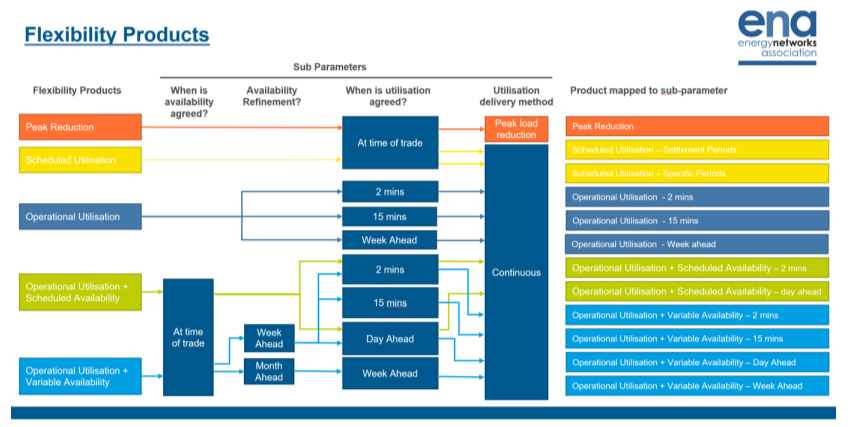Author: Emilis Srage, Product Manager, Electron
In the UK, the Open Networks programme aims to help network operators transition to a smart, flexible energy system. In recent years, the initiative has focused on standardising processes across flexibility markets. This is to enable more distributed energy resources (DERs) to participate.
As such, flexibility markets in the UK operate across a set number of standard “flexibility products”. Network operators can procure these products or “flexibility services” from flexible distributed energy resources (DERs), commonly known as flexibility service providers (FSPs).
The original four standard flexibility products
The Open Networks project initially established four flexibility products in 2020. These products aimed to capture most of the flexibility use cases that flexibility providers could meet:
- Sustain: This product was scheduled in advance, asking an asset to adjust their demand over a defined period.
- Secure: For this product, a provider agrees ahead of time their availability to change their export or import at a particular time.
- Dynamic: This near real-time product allowed network operators to call on assets with short notice to respond to any network abnormalities or outages.
- Restore: This product was dispatched after an unexpected loss of supply to short time scales, to support faster restoration.
The Flexibility Products Review and Alignment report shares that those products helped facilitate several “new and interesting markets, increasing market fluidity extensively.”
However, system operators sometimes differed in how they used those services, according to their different local requirements.
Three areas needed more alignment, to make sure the products could represent a minimum of 80% of the flexibility tendered by mid 2024:
- the payment types used (either utilisation-only or availability and utilisation)
- the way they are used, either as pre-fault services or post-fault services
- market timings
The current UK standard flexibility products
Open Networks has therefore since amended and expanded the standard flexibility products. The new products take into account more energy asset capabilities and localised deviation in use. This is to help more DERs to participate, to promote liquidity in markets.
The new products that UK system and network operators can request now cover:
Scheduled Utilisation
This is a utilisation-only product, scheduled ahead of time. For this product, dispatch is agreed at time of trade. This is a pre-fault service, which is used to pre-emptively manage loads on the network.
This product is quite popular with DSOs that run short-term flex markets because it’s straightforward to run and it provides guaranteed revenue to FSPs.
Operational Utilisation
This is another utilisation-only product, but this one’s a post-fault service, which help restore the network following a fault. Post-fault services require fast response times and are dispatched in near real-time.
FSPs then only get paid when they are dispatched.
Operational Utilisation + Scheduled Availability
Next is the Operational Utilisation & Scheduled Availability product. This product has an availability payment, so assets are guaranteed some revenue for simply being available.
This product can be used either as a pre-fault service, with day-ahead dispatch, or as a post-fault service, with real-time dispatch.
It’s up to the market operator to decide how they want to use it.
Operational Utilisation + Variable Availability
The fourth product on the list is Operational Utilisation and Variable Availability product. This product also has an availability payment.
What’s different about this one, is that it has an availability “refinement” window, which allows market operators to tweak the reserved volumes, either a month-ahead or a week-ahead.
This product also allows for various dispatch arrangements, either pre-fault or post-fault, meaning market operators have more choice in how they run it.
Peak Reduction
The final product is Peak Reduction. This is another utilisation-only product, which focuses solely on energy efficiency measures.
This differs as there is no actual dispatch. Load shifting is achieved by using energy-efficient appliances, improving insulation, and other measures.
The Energy Networks Association (ENA) has also shared a diagram to demonstrate the differences between each product:

Conceptually, the new products aren’t that different from the previous ones, Secure, Dynamic, Restore, and Sustain. The new products simply allow for more variations within each product, which gives market operators more options to choose from.
Find more information for providing flexibility services in our resource hub for flexibility providers.

